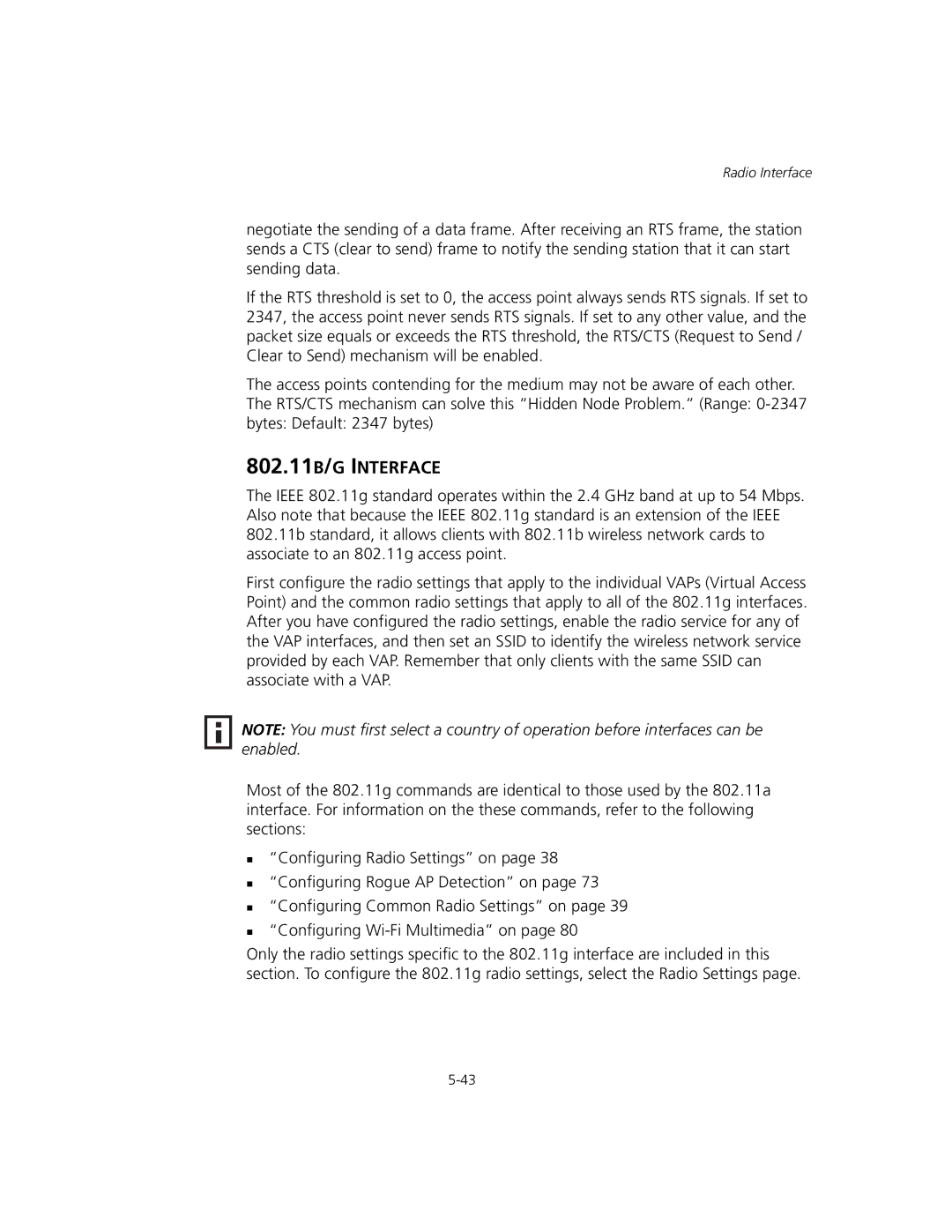Radio Interface
negotiate the sending of a data frame. After receiving an RTS frame, the station sends a CTS (clear to send) frame to notify the sending station that it can start sending data.
If the RTS threshold is set to 0, the access point always sends RTS signals. If set to 2347, the access point never sends RTS signals. If set to any other value, and the packet size equals or exceeds the RTS threshold, the RTS/CTS (Request to Send / Clear to Send) mechanism will be enabled.
The access points contending for the medium may not be aware of each other. The RTS/CTS mechanism can solve this “Hidden Node Problem.” (Range:
802.11B/G INTERFACE
The IEEE 802.11g standard operates within the 2.4 GHz band at up to 54 Mbps. Also note that because the IEEE 802.11g standard is an extension of the IEEE 802.11b standard, it allows clients with 802.11b wireless network cards to associate to an 802.11g access point.
First configure the radio settings that apply to the individual VAPs (Virtual Access Point) and the common radio settings that apply to all of the 802.11g interfaces. After you have configured the radio settings, enable the radio service for any of the VAP interfaces, and then set an SSID to identify the wireless network service provided by each VAP. Remember that only clients with the same SSID can associate with a VAP.
NOTE: You must first select a country of operation before interfaces can be enabled.
Most of the 802.11g commands are identical to those used by the 802.11a interface. For information on the these commands, refer to the following sections:
“Configuring Radio Settings” on page 38
“Configuring Rogue AP Detection” on page 73
“Configuring Common Radio Settings” on page 39
“Configuring
Only the radio settings specific to the 802.11g interface are included in this section. To configure the 802.11g radio settings, select the Radio Settings page.
